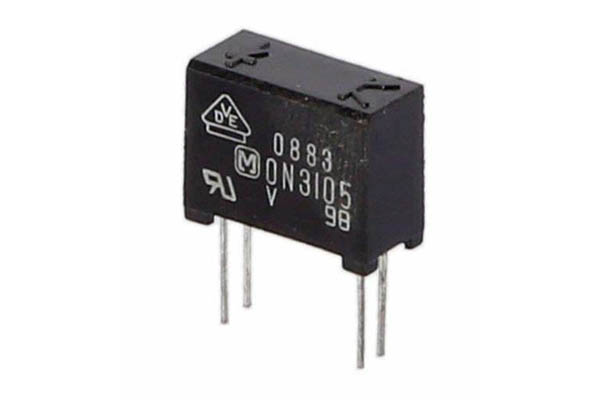Optocouplers, also known as optoisolators, are semiconductor optoelectronic devices that combine light-emitting devices and light-sensitive devices in a single package. They convert electrical signals by utilizing the interaction of light. Common light-emitting devices used in optocouplers include light-emitting diodes (LEDs), while light-sensitive devices include photodiodes, phototransistors, photoresistors, and optotriacs. Optocouplers are available in various series, tailored to different types of light-emitting and light-sensitive devices.
The Role of Optocouplers in Switching Power Supplies:
Optocouplers are vital in circuit applications, particularly in switching power supplies. Their primary function is to isolate the input signal from the output signal, preventing interference between the two.
Optocouplers are commonly used in switching power supplies to regulate the current state in various circuits. By leveraging the characteristics of optocouplers, controlled optoelectronic switches can be created. These switches offer excellent control and voltage stabilization capabilities for switching and high-voltage circuits. They effectively isolate the input and output signals, ensuring minimal interference.
Working Principle:
During operation, optocouplers transmit and amplify signals through light emission, ensuring the photodetector receives them to achieve the desired outcome. This provides several benefits and conveniences in practical applications.
In single-chip switching power supplies, using linear optocouplers enables the construction of optocoupler feedback circuits. These circuits modulate the control terminal current to vary the duty cycle, ultimately achieving precise voltage regulation objectives.
Advantages of Optocouplers:
Optocouplers offer several advantages in switching power supply applications, including:
Unidirectional transmission: Optocouplers provide complete electrical isolation between the output and input sides, ensuring no impact on the output side.
Strong immunity to interference: Optocouplers are highly resistant to external disturbances, ensuring stable operation.
No physical contact: Optocouplers operate without any physical contact, resulting in a long application lifespan.
High transmission efficiency: Optocouplers offer efficient signal transmission with minimal losses.
Recommended Optocoupler Models for Switching Power Supplies:
Here are a few optocoupler models recommended for switching power supply applications:
MPC817, MPC816:
Features: High isolation of 5000 VRMS, flexible CTR, DC input with transistor output, operating temperature range of -55°C to 110°C, REACH compliance, halogen-free.
Application: Ideal for optocoupler feedback circuits in switching power supplies.
MPH-341:
Features: Peak output current of 3.0A, rail-to-rail output voltage, propagation delay time of 100ns, low-voltage lockout protection (UVLO) with hysteresis, wide operating range: 15V to 30V (Vcc), performance guaranteed over -40°C to +110°C temperature range.
Application: Suitable for precise voltage regulation in switching power supplies.
MPC356:
Features: High isolation of 3750 VRMS, flexible CTR, DC input with transistor output, operating temperature range of -55°C to 110°C, REACH compliance, halogen-free, MSL class 1.
Compliance: UL – UL1577, VDE – EN60747-5-5 (VDE0884-5), CQC – GB4943.1, GB8898.
Application: Ideal for electrical insulation, level shifting, driving circuits, switch circuits, pulse narrowing circuits, solid-state relays (SSR), and communication interfaces.
Conclusion:
Optocouplers are crucial in switching power supplies by providing electrical isolation between input and output signals. They effectively regulate current states and ensure minimal interference between circuits. The recommended optocoupler models, such as MPC817, MPC816, MPH-341, and MPC356, offer high isolation, flexible CTR, and reliable performance for switching power supply applications. These optocouplers are widely used in electrical insulation, level shifting, driving circuits, and other applications requiring reliable signal transmission and voltage regulation.



